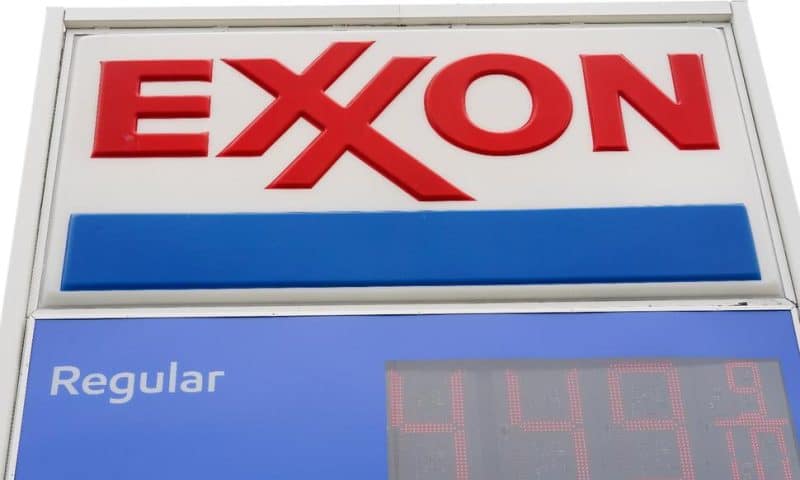Exxon Mobil’s profit more than doubled in the first quarter as the oil and natural gas company overcame declining prices by producing more oil
Exxon Mobil more than doubled its profit during the first quarter, producing more oil to overcome energy prices that have declined during a period of economic unease.
The nation’s second-largest oil company, Chevron, also beat expectations, but did so more through its refining operations.
Exxon’s et oil and gas net production jumped by nearly 300,000 oil-equivalent barrels per day compared with the same period last year, which was marked by Russia’s invasion of Ukraine and soaring energy prices. Last year at this time, a barrel of U.S. crude was trading above $100, about 30% higher than today.
A month after the invasion of Ukraine began Exxon said that it would pull out of Russia, where it valued its operations in excess of $4 billion, and cut off new investment in the country. In October, the company said its operations had been expropriated by Moscow after it had tried to wind them down in an orderly fashion,
The company boosted production in Guyana by 40% since then, which “more than offset our divestments in the expropriation of one which we no longer account for but which importantly remains part of global supply,” said Chairman and CEO Darren Woods on Friday.
Exxon earned a record $11.43 billion, or $2.79 per share, for the three months ended March 31. Per-share adjusted earning were $2.83, topping Wall Street projections of $2.65, and it more than twice the $5.48 billion, or $1.28 per share, it earned during the first quarter last year.
Exxon does not adjust its reported results based on one-time events such as asset sales.
Revenue for the Irving, Texas-based company was $86.56 billion, down from $90.5 billion a year earlier, and just shy of analyst expectations.
Net production was 3.8 million oil-equivalent barrels per day, up nearly 160,000 oil-equivalent barrels per day compared with the year-ago period. Excluding divestments, entitlements and the Sakhalin-1 expropriation, net production climbed almost 300,000 oil-equivalent barrels per day driven by projects in Guyana and the Permian.
The price for a barrel of benchmark U.S. crude has fallen more than 6% this year, however, and it’s fallen 29% over the past 12 months. Central banks have been attempting to cool their respective economies because of elevated inflation and evidence of those maneuvers have begun to appear.
The U.S. reported this week that its economy slowed sharply from January through March, decelerating to just a 1.1% annual pace as higher interest rates hammered the housing market and businesses reduced their inventories.
U.S. benchmark crude oil was at $75.25 per barrel in electronic trading on the New York Mercantile Exchange on Friday, while brent crude, the international standard, was at $78.74 per barrel.
Chevron Corp., based in San Ramon, California, posted a profit of $6.57 billion. Its adjusted earnings totaled $3.55 per share, while revenue came in at $50.79 billion.
The company refining operations churned out nearly $1 billion in profits, more than doubling earns from a year ago in that division.
Shares of Exxon Mobil Corp. rose more than 2% at the opening bell while shares of Chevron rose less than 1%.

